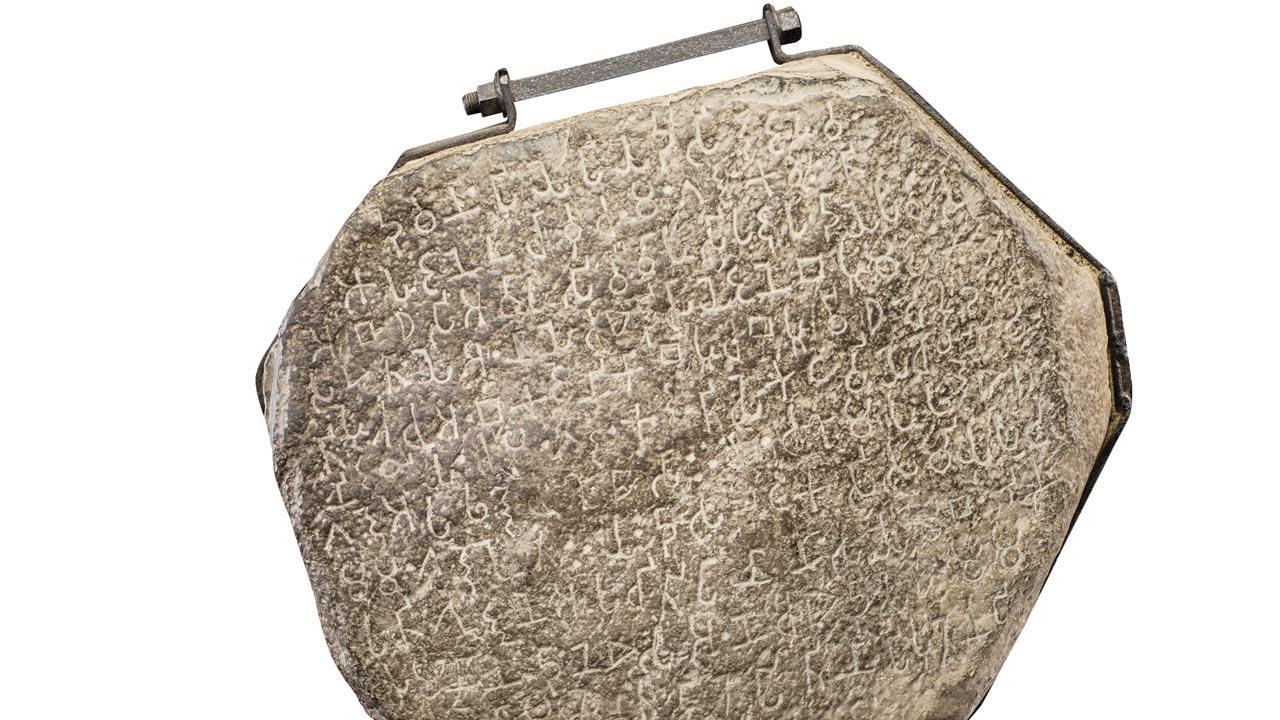An online talk will look at the history of lettering in India, and how the material for scripts changed from rocks to leaves to paper

The Ashokan edict number IX, which was found in Nallasopara
Sometimes, history is set in stone, quite literally. There was an Ashokan edict dating back to 250 BC that was located in Nalasopara in the 19th century for example, which offers a window into what the world had been like during the Mauryan era. That piece of rock had messages written on it in the Brahmi script, and similar edicts were found in places as far off as Kandahar in modern-day Afghanistan, helping historians gauge the scale of the empire’s vast swathes of territory. They acted as rudimentary forms of telegrams, says type designer and researcher Tanya George, with the durability of the material ensuring that the messages remained imprinted in time, again quite literally, since they have survived well over 2,000 years. Their purpose could well have been to propagate the ruler’s Buddhist leanings.
A folio from an illustrated manuscript of Devi Mahatmya dating back to the 18th century
These are the sorts of insights that George will share at a talk titled Indian Letters Across the Ages, where she will explain how the scripts used in our country, the material they were carved, written or printed on, and the purposes they served changed with time. If it was a rock in Ashoka’s rule, the medium for writing messages had changed to leaves by the 17th and 18th centuries, before the printing press arrived and permanently changed the game as far as the written word is concerned, this newspaper being a prime example of that evolution. George tells us how Indian scripts had been phonetic in nature in the 18th century, because texts were passed down orally from gurus to disciples who would recite them for hours, committing them to memory.
Desha Sevika, a label print from the early 20th century
She continues, “There were no spaces between words and there was no need for punctuation either, because the readers knew everything by heart. But when the printing press came in, a lot of it was designed for Latin and English, languages that had word spaces and punctuations. Things like question marks and commas, which weren’t native to our script, were thus introduced in order to sort of retrofit the text for the new machines, and Devanagari was chosen in places like Maharashtra and Gujarat because it was easier to print than the Modi script [the other prevailing lettering style from that period].”
Tanya George
Her point is that our written forms of communication and the material that holds them will keep changing, whether it’s a rock, leaf, paper or smart gadget, which is another place where you might be reading this newspaper article.
On September 19, 11 am
Log on to events@csmvs.in to register
Free
 Subscribe today by clicking the link and stay updated with the latest news!" Click here!
Subscribe today by clicking the link and stay updated with the latest news!" Click here!









